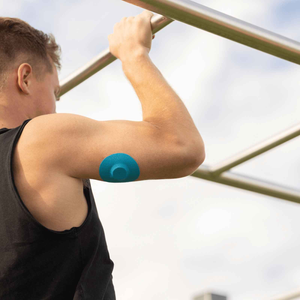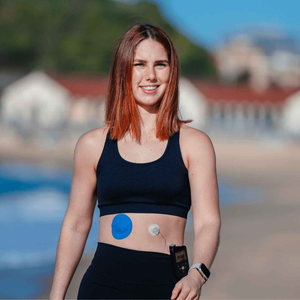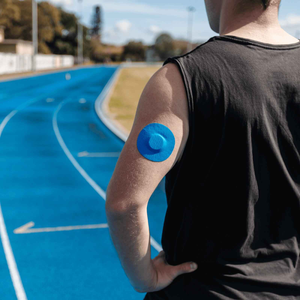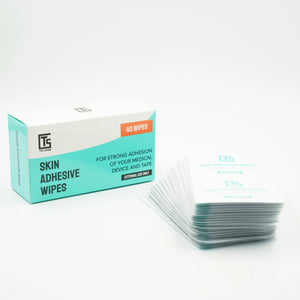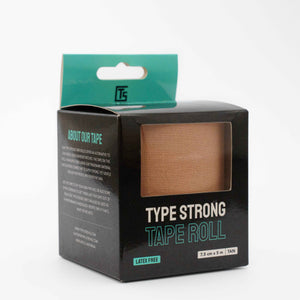So you’ve just stuck on your CGM and you’re ready to forget about it for the next ten days—until your skin starts itching like mad. Sound familiar?
If you’ve ever dealt with red, flaky skin after applying a CGM patch, chances are your skin’s reacting to one or more ingredients in the adhesive. But here's the kicker: not all "hypoallergenic" patches are created equal. Let’s unpack what that term actually means—and what you should look out for.
What Does ‘Hypoallergenic’ Mean, Really?
The word hypoallergenic gets thrown around a lot. It sounds reassuring, right? But there’s no global legal definition for it. It simply means the product is less likely to cause an allergic reaction - not that it won’t.
That’s why, if you’ve got sensitive skin or known allergies, it pays to dig deeper into the actual ingredients.
Table: Common Ingredients in CGM Adhesives (and How They Stack Up)
|
Adhesive Component |
Purpose |
Irritation Risk |
Used in Hypoallergenic Patches? |
|
Acrylic adhesive |
Strong hold, water-resistant |
Moderate – varies by skin |
Sometimes (if purified) |
|
Hydrocolloid layer |
Absorbs moisture, promotes healing |
Low |
Yes |
|
Silicone gel |
Gentle grip, flexible on sensitive skin |
Very low |
Yes |
|
Polyurethane film backing |
Breathable, protects sensor |
Low |
Yes |
|
Latex (natural rubber) |
Cheap, sticky |
High – common allergen |
No |
|
Fragrances or dyes |
Cosmetic appeal |
High – unnecessary risk |
No |
Disclaimer: Always consult your healthcare provider if you're experiencing severe skin reactions. The information above is based on general observations and product testing practices.
Safe vs Not-So-Safe: Ingredient Breakdown
Top ingredients to look for:
- Medical-grade silicone – Extremely skin-friendly and ideal for long-term wear.
- Hydrocolloids – Gentle and healing, often used in wound care.
- Polyurethane backing – Breathable and lightweight, perfect for hot climates or active wearers.
Best avoided if you’ve got sensitive skin:
- Latex – Known to trigger allergic reactions for many people.
- Cheap acrylics – Not all acrylics are equal. Some cause irritation, especially on sweaty or oily skin.
- Fragrance or coloured dyes – They can increase the risk of skin reaction.

What About Type Strong’s Patches?
At Type Strong, our hypoallergenic CGM patches are made for real skin—flaky skin, oily skin, ultra-sensitive skin. Here’s how:
- Latex-free
- No fragrances
- Medical-grade adhesive (not industrial)
- Designed for 10+ days of comfortable wear
Whether you're using a Dexcom G7, Dexcom G6, Freestyle Libre, Guardian, Omnipod, or infusion set, we've got an adhesive patch for it. Our patches don’t just stick—they stay kind to your skin too.
Explore our Build Your Own Patch Bundle for a custom mix that suits your wear and tear style.
Common Signs Your Patch Isn’t Playing Nice
If you're seeing any of the following, it might be time to try a new patch—or barrier method:
- Redness that lingers more than a few hours
- Dry, cracked, or peeling skin
- Bumps or blisters under the adhesive
- Itching that worsens over time
In more serious cases, it could be an adhesive allergy. You’ll want to speak with a dermatologist or endocrinologist to confirm.
💡 More tips in our full guide on how to apply & use the Freestyle Libre.
Universal Skin-Friendly Tips (No Matter the Patch)
Even the gentlest patch can cause issues if applied incorrectly. Here’s how to give your skin its best shot:
- Clean skin only – No oils, lotion, or soap residue.
- Let alcohol wipes dry fully before application.
- Try a barrier film (like Cavilon or Skin Prep) under your patch.
- Rotate sites every time to let skin recover.
- Don’t yank it off – slow removal with a bit of essential oil (eucalyptus or tea tree) works wonders.
“Adhesive dermatitis is common in diabetic patients using sensors” – NIH Study on Contact Dermatitis
Quick FAQ
Q: Are your patches latex-free?
A: Yes, all of them.
Q: Can I use your patch with sensitive skin or eczema?
A: Many of our customers with eczema use our patches without issue, but we recommend patch testing and using barrier sprays if unsure.
Q: What if I’m still getting a rash?
A: It could be the CGM sensor adhesive, not the patch. Consult your doctor or explore third-party barrier methods.
“Choose patches that avoid common allergens like latex and fragrance” – Allergy UK
Final Thoughts
Choosing the right CGM patch isn’t just about the stick—it’s about skin safety too. With so many options out there, reading the ingredient list is one of the smartest things you can do.
And if you’re looking for something reliable, skin-friendly, and made with real-life wear in mind, check out our full hypoallergenic patch collection.
Your skin deserves better. So does your CGM.
